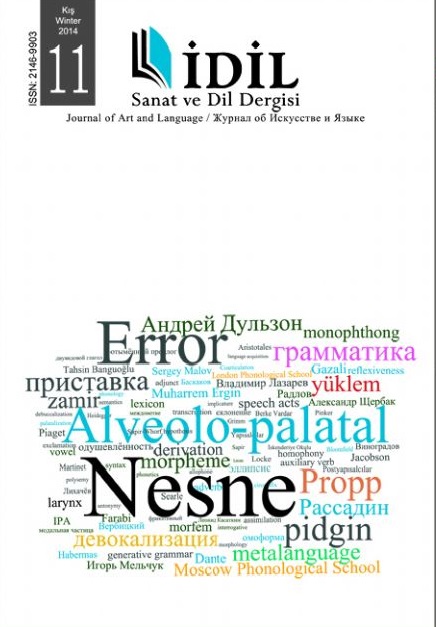FEMİNİST TEORİ VE SANAT ÜZERİNDE DERRİDA ETKİSİ: YAPIBOZUM
DERRIDA'S EFFECT ON FEMINIST THEORY AND ART: DECONSTRUCTION
Author(s): Yeliz SelviSubject(s): Gender Studies, Fine Arts / Performing Arts, Structuralism and Post-Structuralism
Published by: Sanat ve Dil Araştırmaları Enstitüsü
Keywords: Structuralism; Deconstruction; Logocentrism; Difference; Feminism; Art;
Summary/Abstract: The main emphasis of deconstruction is on assumption of established with the binary opposition of western philosophy such as mind/nature, male/female. According to Derrida, a certain number of thinking principles lie behind as “logo centrism”, “phallus logic centrism" at the source of these contradictions that created own “other” by making superior the first on the second. Fundamentally, supremacy of the word to the writing is operated at the expense of the exclusion of others. In this sense, Derrida aimed to develop a new language which does not allow the exclusion of other by disrupting the logical structure of binary oppositions with developed a number of strategies of deconstruction as "differance". Especially with this particular purpose about liberating language the deconstruction was found to become a concept often mentioned along with feminist theory by transformed into a liberating say for women who want to get rid of the label of other. In this study, therefore, Derrida’s ideas of deconstruction to the contrast and difference is assumed to be inspiring for feminist in theory and art in overcoming equality-difference dilemma on a stressed line. Thus, the tips that are thought deconstruction to feeds the feminist theory and methodology, pooled. By evaluating these tips, has sought answers to questions as what Derrida said about woman being “subject”, how he has contributed to women's liberation movement in every case where feminists agree with. In the study, the resulting findings, how the women overcome the dilemma of equality-difference in the production process is explained by reading on the intellectual trajectory of deconstructive theory first and second generation of feminist artist’s experimental/artistic work as a limitation.
Journal: İdil Sanat ve Dil Dergisi
- Issue Year: 3/2014
- Issue No: 11
- Page Range: 79-98
- Page Count: 20
- Language: Turkish

